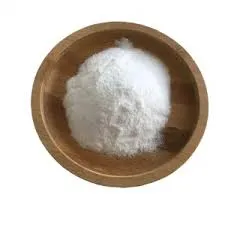Understanding Pentoxifylline A Comprehensive Overview
Pentoxifylline, commonly marketed under brand names such as Trental, is a medication primarily used to improve blood flow in patients with certain medical conditions. This phosphodiesterase inhibitor has gained attention for its therapeutic applications, particularly in managing peripheral vascular disease and enhancing blood circulation in various contexts. In this article, we will explore the mechanisms, uses, dosage, side effects, and considerations surrounding pentoxifylline.
Mechanism of Action
Pentoxifylline works by reducing the viscosity of blood, enhancing red blood cell flexibility, and improving microcirculation. It inhibits the enzyme phosphodiesterase, leading to increased intracellular cyclic AMP (adenosine monophosphate) levels. This action results in the relaxation of blood vessels and improved flow, making it particularly useful for patients suffering from conditions associated with reduced blood flow, such as claudication and diabetic foot ulcers.
Therapeutic Uses
1. Peripheral Arterial Disease (PAD) Pentoxifylline is most commonly prescribed for patients with claudication due to peripheral arterial disease. By improving blood flow, it alleviates pain during walking and enhances overall physical endurance.
2. Diabetic Foot Ulcers This medication has shown promise in the management of diabetic foot ulcers. Its ability to improve circulation can facilitate faster healing and prevent complications in patients with diabetes, whose circulation may be compromised.
3. Other Conditions Some studies suggest potential benefits of pentoxifylline in managing conditions like venous leg ulcers, promote healing post-surgery, and mitigate symptoms related to Raynaud's phenomenon. However, these applications may require further research for broader clinical acceptance.
Dosage and Administration
The standard dosage of pentoxifylline is typically 400 mg administered three times daily, although healthcare providers may adjust it based on individual patient needs and responses. It is crucial for patients to follow their physician’s recommendations regarding dosage to ensure optimal therapeutic effects while minimizing potential adverse effects.
pentoxifylline er 400

Side Effects
While pentoxifylline is generally well-tolerated, it can lead to a range of side effects, including
- Gastrointestinal Symptoms Nausea, vomiting, diarrhea, and abdominal discomfort are common, often diminishing over time as the body adjusts to the medication. - Central Nervous System Effects Some patients may experience dizziness, headache, or insomnia. It’s important to report these symptoms to a healthcare provider, especially if they are severe or persistent.
- Cardiovascular Reactions Rarely, medication may lead to cardiovascular changes such as arrhythmias or hypotension, making it crucial to monitor heart conditions before and during treatment.
Precautions and Considerations
Before starting pentoxifylline, patients should discuss their complete medical history with their doctor, particularly if they suffer from conditions such as liver disease, bleeding disorders, or if they are pregnant or breastfeeding. It's also important to consider potential interactions with other medications, especially those that affect blood clotting, as pentoxifylline may augment their effects.
Conclusion
Pentoxifylline represents a significant advancement in the pharmacological management of disorders related to impaired blood flow. Its ability to enhance microcirculation makes it invaluable in treating conditions like peripheral arterial disease and diabetic foot ulcers. However, as with any medication, the use of pentoxifylline should be carefully monitored by healthcare professionals to minimize side effects and ensure patient safety. Continued research and clinical trials may further elucidate its benefits and expand its potential applications in various medical scenarios, benefiting countless patients in need of better circulation and healing strategies.
In summary, pentoxifylline’s mechanism of action and therapeutic versatility make it a critical player in the field of vascular medicine. By understanding its uses, side effects, and proper administration, both patients and healthcare providers can collaborate more effectively to achieve optimal treatment outcomes.

